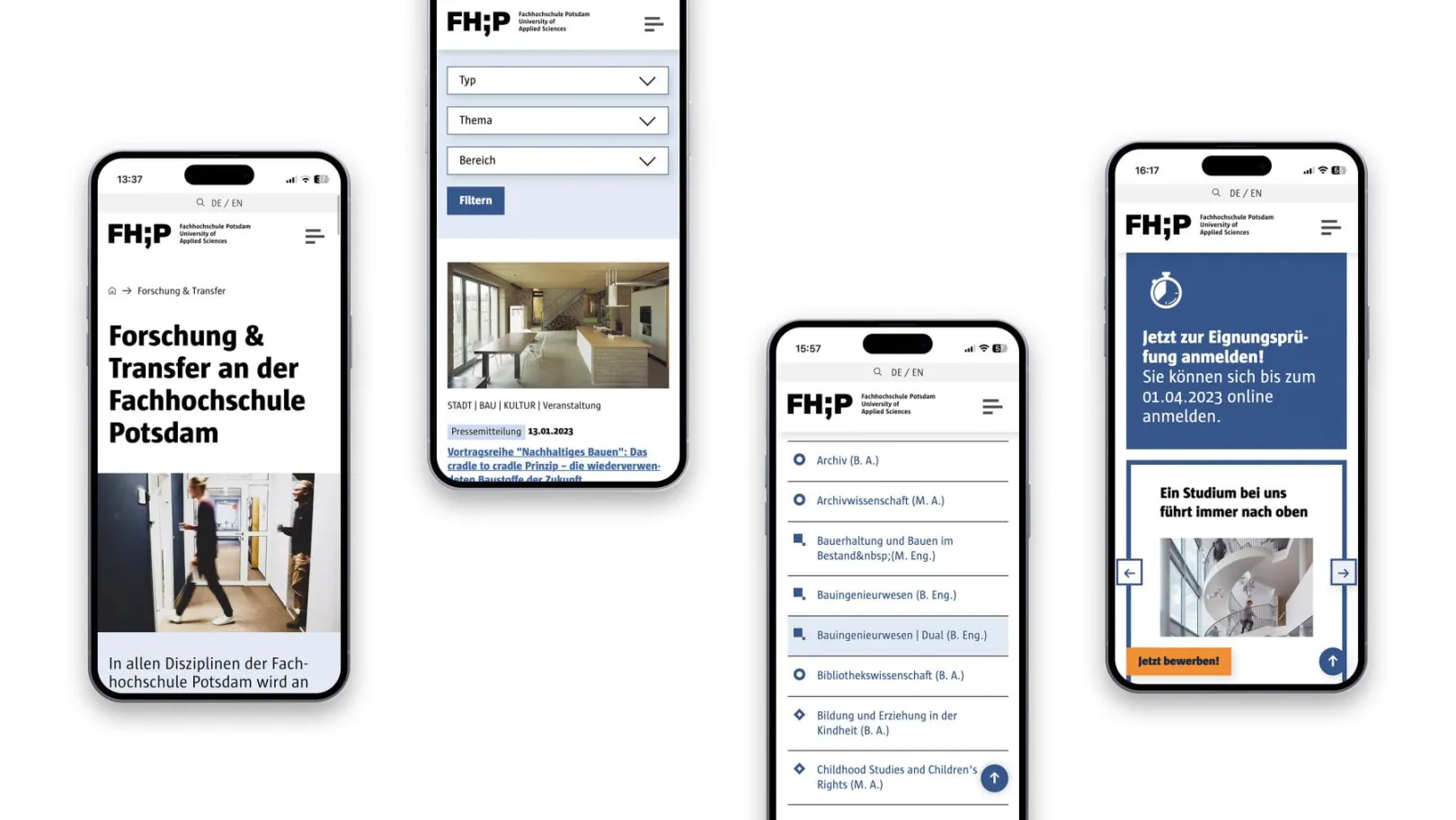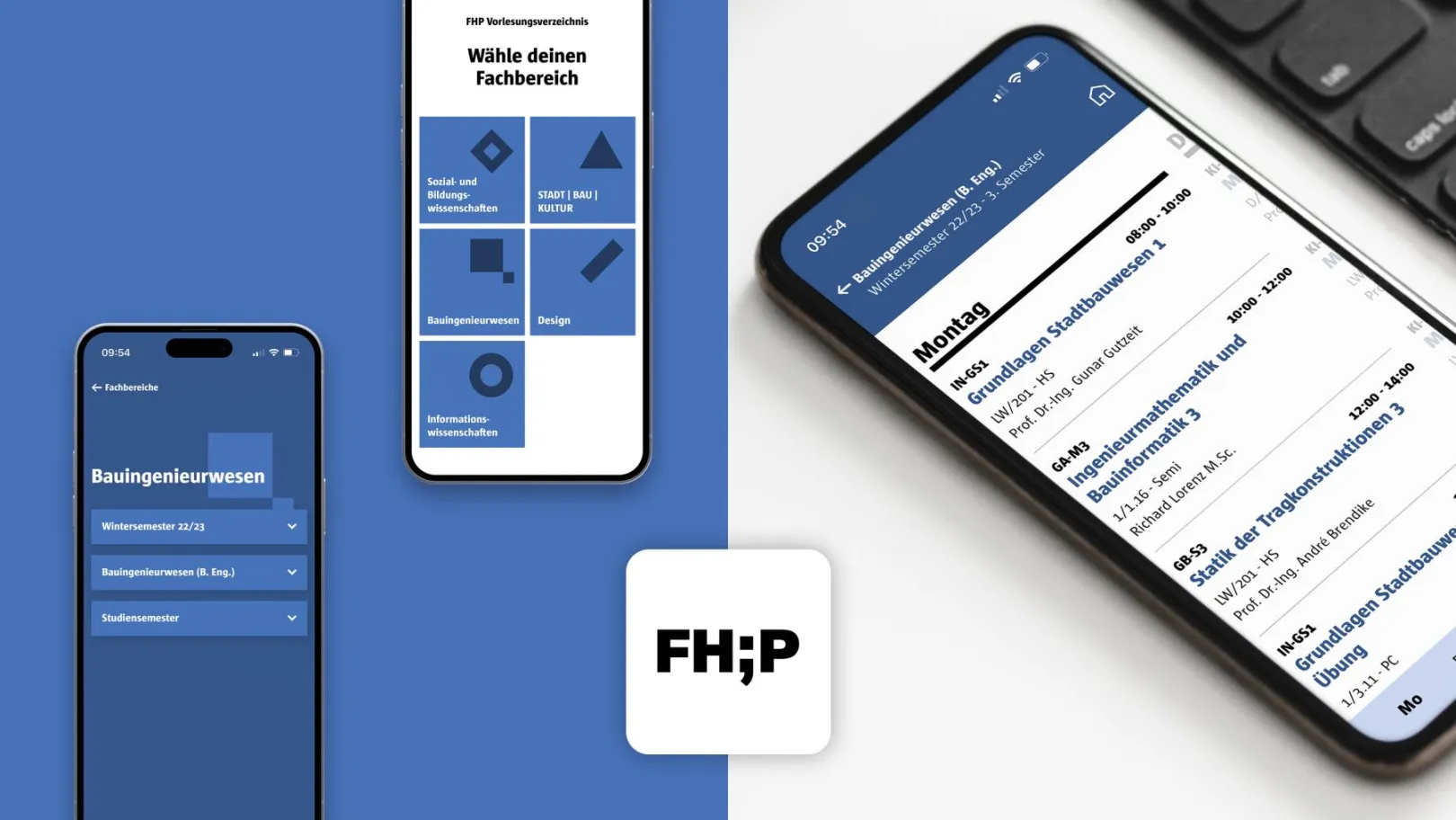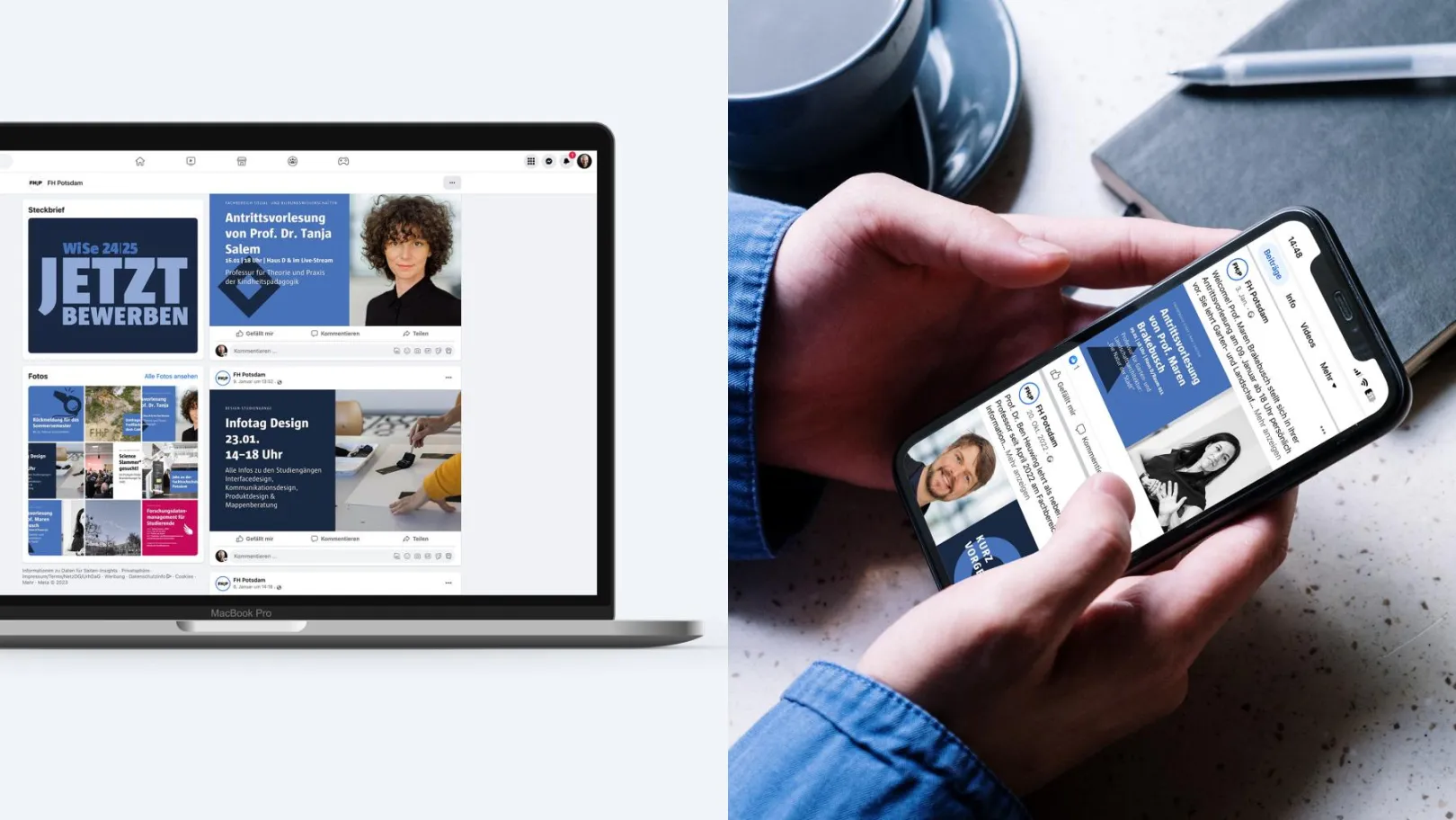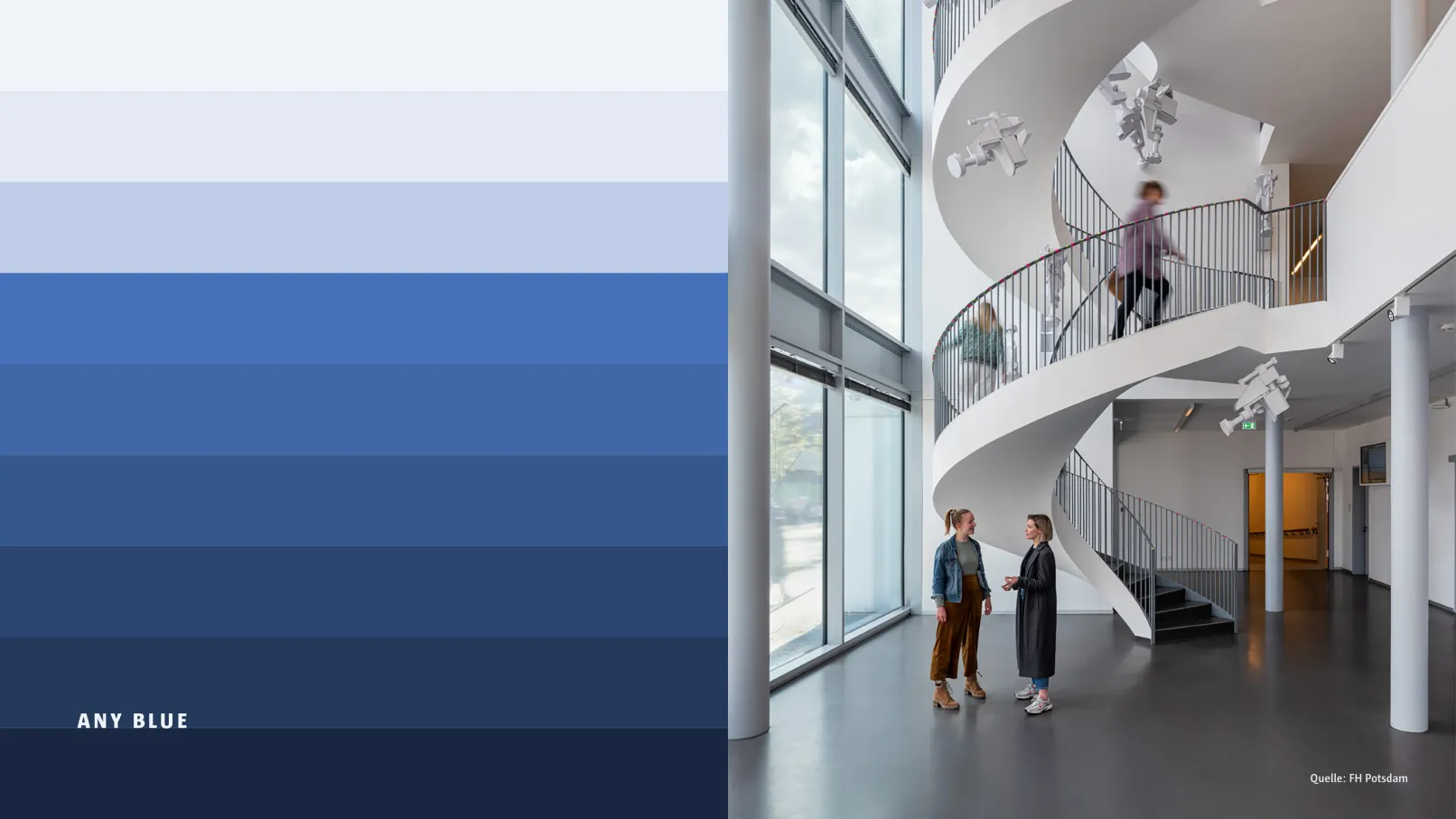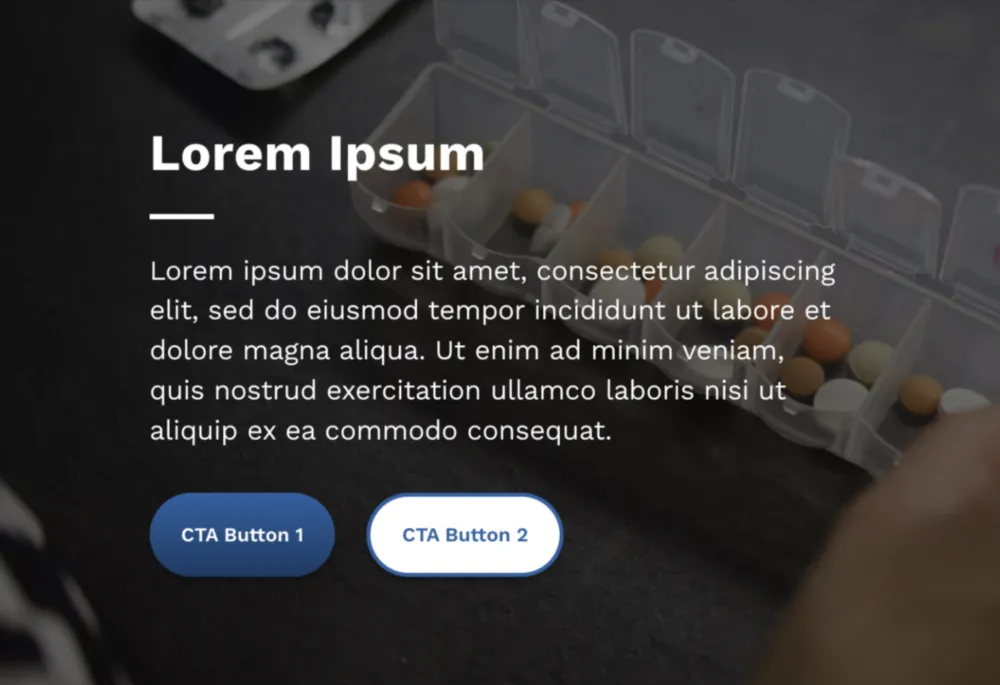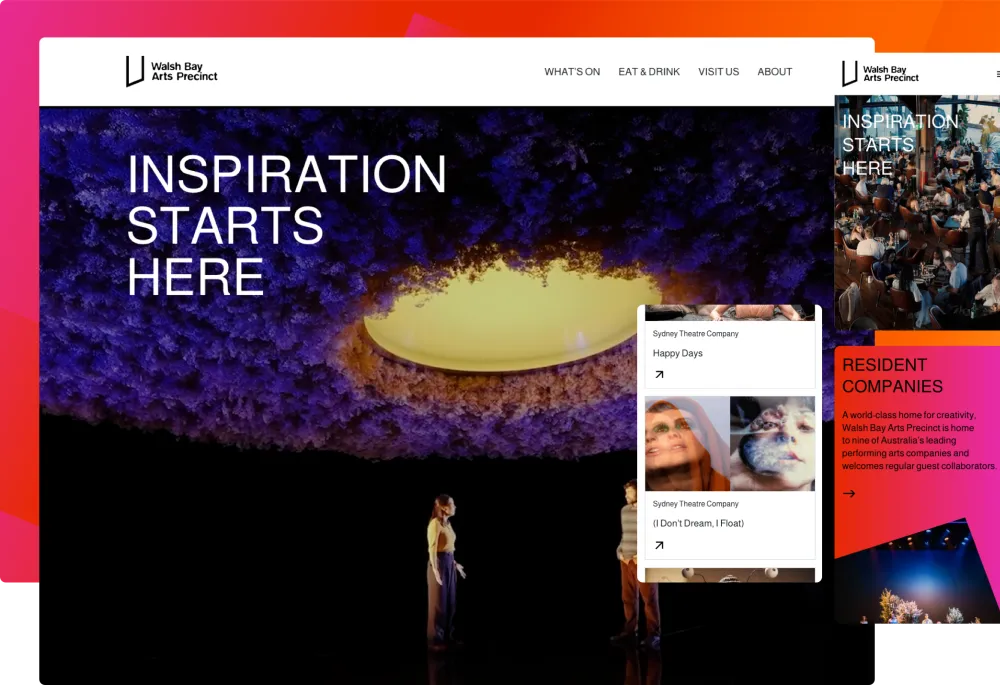Visit the site
Visit the siteOrganizations Involved
Community contributions
We believe in open source and are enthusiastic contributors to the Drupal community. We are not only interested in code, but also in making Drupal better known in Germany. Typo3 is still widely used by public organisations in particular, although satisfaction with the system is not really high. However, the fears associated with a change often prevent organisations from making the switch. This is only possible if the advantages of Drupal are communicated and made visible.
We have been working on patches for both core and contrib modules over the last few years and have developed various custom modules for our distribution and for projects. The most important modules for this project are listed below.
Core/Contrib
- Content Moderation, Workflows, Workbench Email
- Migrate/Migrate Plus/Migrate Tools
- Image Widget Crop, Media Bulk Upload / DropzoneJS, ImageAPI Optimize WebP, Svg Image
- Digital Signage Framework
- Entity Print
- simpleSAMLphp Authentication, External Authentication
- Matomo
- Scheduler, Scheduler Content Moderation Integration
- Search API, Search API Autocomplete
- Translation Management Tool, TMGMT DeepL Integration
- Webform
Custom
- Calendar Links (Save events in the calendar)
- Paragraph Anchors (Deep links to content modules)
- Search Filters (Hiding certain content from the search results)
- SVG Favicon (Support for Dark & Light Mode in Favicon)
- Text Formatters (Collection of field formatters for styling fields in the frontend)
- Timetable (Import of the course catalogue)
- Video Poster (Poster image for video elements)
- Views Filter Count (Filter number of search results in views)
- Visibility Filter (Marking of internal pages with a lock symbol)
Contributions to Issues
- Optimisation of the ‘Input Required’ function of views filters: https://drupal.org/i/3300701, https://drupal.org/i/3300709, https://drupal.org/i/3300714, https://drupal.org/i/3300721
- Display of DateTimeRanges: https://drupal.org/i/2827055
- Optional End Date: https://drupal.org/i/3312834
- Paragraphs: https://drupal.org/i/3084934
- Scheduler Content Moderation: https://drupal.org/i/3274274
- Workbench Email: https://drupal.org/i/3017273
- Entity Reference Integrity: https://drupal.org/i/3106850
- Menu Block: https://drupal.org/i/3007225
- Menu Trail by Path: https://drupal.org/i/2870738
- Obfuscate: https://drupal.org/i/3226644, https://drupal.org/i/3226914, https://drupal.org/i/3312913, https://drupal.org/i/3366415
- SVG Image: https://drupal.org/i/3227734, https://drupal.org/i/3257729, https://drupal.org/i/3185492
- Views Reference Field: https://drupal.org/i/3372622
Relaunch of the central website of the Potsdam University of Applied Sciences for different user groups: prospective students, the public, companies, research organisations, students and university members. The website is a contact point, a comprehensive information portal, an online resource and a working tool for university members - in some cases with restricted access.
The Potsdam University of Applied Sciences (FHP) was founded in 1991 and today has around 200 professors and around 3,600 students in more than 30 degree programmes, ranging from information and engineering sciences to socio-cultural and design disciplines.
The university is particularly committed to promoting social development through the interdisciplinary combination of its subjects in the profile lines "Digital Transformation - Urban Future", "Educating Society" and "Designing, Building and Preserving" in the perspective of study and teaching, research, transfer and further education, both regionally and internationally.
The digital presence of the Potsdam University of Applied Sciences was realised with Drupal 9 on the basis of our own distribution 'Brandcoded'. The platform includes the public website, a closed area (which can be understood as an intranet) and, in addition to many interfaces to other systems, a course catalogue which can be found on the website and is also available to students as a mobile web application.
In addition to the website, the content management system is also used to manage the digital signage system on the university campus.
The challenges
In addition to clarifying the possibility of migrating the content, which would then be enriched in Drupal, another challenge was to connect different tools and systems to avoid duplicate maintenance. The background to this is that the content is linked via central taxonomies in such a way that the presentation of content modules in different contexts is possible without major maintenance effort. The aim is to provide the various stakeholders with as complete a picture as possible of the University's programmes and services.
A single sign-on using Shibboleth/SAML is used to log in to the closed areas of the website. Users who are authenticated in this way with their campus account can be granted additional rights as web editors in Drupal.
In order to meet the high accessibility requirements, the optimisation of the front-end of the website and the logical and accessible structure of the back-end were of central importance. As a result, it is now possible for an FHP editor with a severe visual impairment to edit the content of the pages without outside help.
The quality standards of the central editorial team in the area of public relations at FHP are very high. For this reason, a system of roles and rights was introduced from the outset to ensure that there is sufficient flexibility and that the individual editorial teams have as much room for manoeuvre as possible, but that content must be checked and approved by the central office. The approval workflow, combined with the multilingual nature of the site, is one of the most difficult process challenges that we still need to work on and optimise.
The course catalogue data is imported from a third party system that provides the data in a proprietary format. Importing this correctly and regularly into the CMS without loss or duplication proved to be particularly tricky. In the end, a solution was found that allows the editorial team to trigger the import at the touch of a button in the administration area.
As well as modernising the digital presence, the aim of the relaunch was to merge the website and intranet, connect various tools and systems, and implement review and approval processes for quality assurance. Last but not least, Typo3 was to be replaced as the content management system.
In order to meet the diverse and sometimes competing requirements of the university's various institutions, extensive content analyses were carried out in advance, taking into account the existing content of the Typo3 system, but with a particular focus on user expectations and media-compatible preparation in accordance with current standards.
In order to meet the content requirements and to achieve a high degree of flexibility in the maintenance of the website, a comprehensive set of content modules (paragraphs) was developed, which allows both simple content maintenance and the retrieval of different content, filterable according to central taxonomies. In this way, we take into account the idea of interdisciplinary links in the sense of the university's profile lines and offer a high degree of convenience in the maintenance of content.
Despite the sometimes complex and extensive content (currently over 9,000 nodes), quality control for fast loading times and continuous improvement of the user experience - including on mobile devices - was at the centre of development. As a result, the use of responsive image styles, optimised image compression and loading speed, and lightweight code are all taken for granted. The aim was and is not only to pass the Core Web Vitals evaluation of the pages, but also to achieve the highest possible score. A goal that can only be achieved through continuous improvement and optimisation.
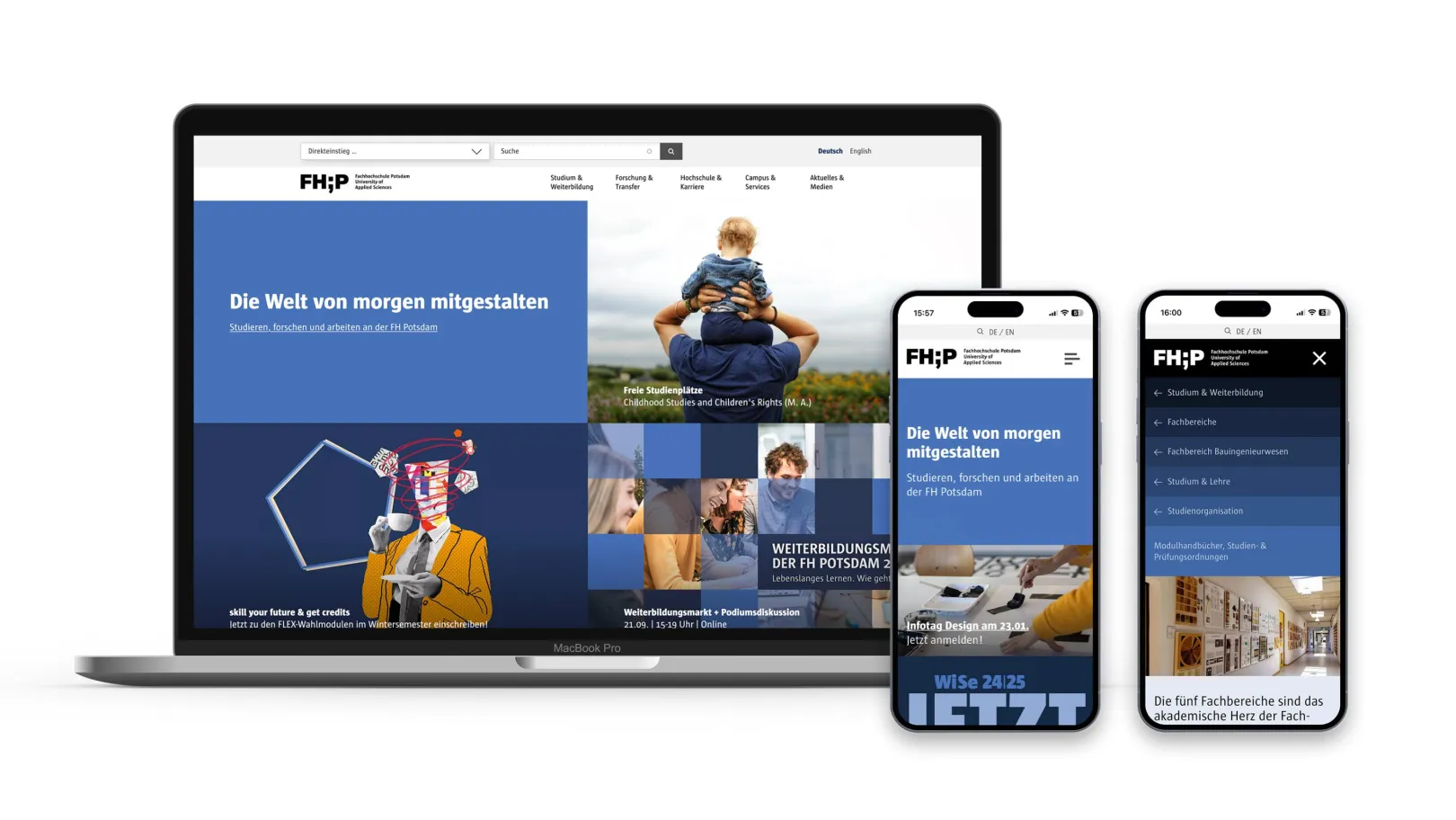
Technical Specifications
Drupal version:

